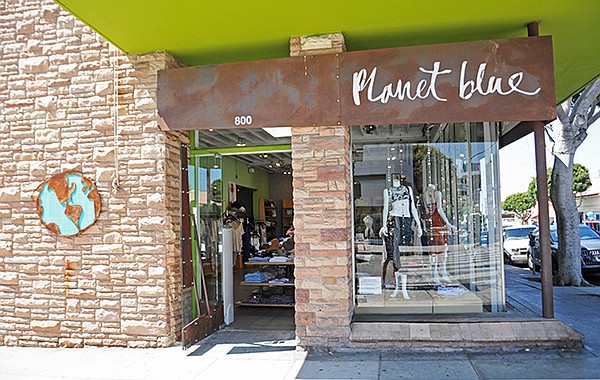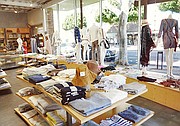EXPANSION PLANS: California retailer Planet Blue has six stores in California—Malibu, Beverly Hills, Venice, Palo Alto, and two locations in Santa Monica. (The 14th Street store is pictured). The company also runs a store in Scottsdale, Ariz., and five in Japan. The company is planning a nationwide rollout of 20 new stores by the end of 2016.
PLANET BLUE
Starting a Nationwide Rollout
Planet Blue, the multi-brand boutique retailer steeped in West Coast beach culture and boho styles, will be taking its act nationwide.
The Santa Monica, Calif.–headquartered boutique chain announced that it will open stores in Miami, Atlanta and Houston. The debuts are scheduled to take place late summer or early fall, said David Lindell, Planet Blue’s vice president of retail.
He is one of a slate of new executives who joined Planet Blue in the fall of 2014 to help guide the retailer’s growth across the U.S. The new executives are Lindell; Katrina Basic, vice president of finance; Roger Wason, vice president of e-commerce; and Ellen Nguyen, brand director.
Planet Blue forecasts opening 20 new stores by the end of 2016, Lindell said. It currently runs a fleet of six stores on the West Coast, and it runs five stores in Japan. They are operated in a partnership with a Japanese company. The retailer’s U.S. store growth started last May when it opened a Planet Blue store in the Town & Country Village retail center in Palo Alto, Calif. In November, another Planet Blue store opened at the Scottsdale Quarter lifestyle center in Scottsdale, Ariz.
As the economy recovers, Planet Blue executives decided the time is right for expansion, Lindell said. “2014 was a record-breaking year for us—in wholesale, in e-commerce and in bricks-and-mortar. Bricks-and-mortar led the way,” he said. The boutique division enjoyed a double-digit increase in same-store sales compared with its 2013 comps. Lindell declined to break out the numbers in the same-store sales.
The economic recovery also presents a lot of opportunity in new retail real estate. The Atlanta Planet Blue will open in a new retail center called Buckhead Atlanta, Lindell said. The Miami boutique will move into a historic building that is being refurbished. It is located on Collins Avenue, between Eighth and Ninth streets in the city’s stylish South Beach district. The Houston store will move into the city’s new River Oaks District retail center, probably this fall. Luxe retailers moving into that district are Etro, Canali, Brioni and Bonobos.
Most Planet Blue boutiques average 2,400 square feet to 3,200 square feet, and currently most of the boutiques in the retailer’s fleet are stand-alone stores. The retailer is considering building stores in Hawaii, where Ling-Su Chinn, Planet Blue’s founder, grew up, as well as New York and other parts of California. The retailer typically scouts for bricks-and-mortar locations where its e-commerce sales surge.
The new stores will carry the same brands offered by Planet Blue’s shops in Malibu and Santa Monica. However, store managers will have leeway to merchandise their stores to fit the styles of the different locales where they do business.
Along with carrying designer brands such as Amuse Society, Mara Hoffman, Mikoh Swimwear, Missoni, Wildfox and 12th Street by Cynthia Vincent, Natalie B. Jewelry, Jen’s Pirate Booty, and For Love & Lemons, Planet Blue offers house brands such as Blue Life, Blue Life Fit and Blue Life Swim. Lindell called it a key part of the business, and the Planet Blue brands have been wholesaled to retailers such as Revolve and Shop Bop.
However, one of the most important initiatives the retailer is taking will be finessing its retail service, Lindell said. “It goes back to basic retail,” he said. “You have good neighborhood staff that is socially connected, and people want to have a relationship with the store.”























